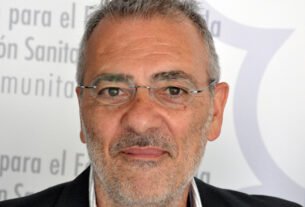Health systems in Latin American countries, like their European counterparts, are faced with an urgent need to restructure their current organizational models if they are to avoid heading into collapse. This is the diagnosis following several studies carried out by Telefónica’s Global Ehealth Unit, whose explanation for this phenomenon is based on a paradoxical trend: as the health of the population improves, it grows more difficult to guarantee proper healthcare in the future.
According to the conclusions drawn from these studies, the contradiction is only apparent and the explanation more simple than one might suppose. Given that better social and health conditions are progressively resulting in an increase in life expectancy (almost 84 years in Spain and 75 in Argentina), the elderly population is increasing. This leads to the prolongation within the system of chronic diseases which require continuous medical treatment. Ailments, such as diabetes, cardiovascular conditions and respiratory difficulties, which fifty years ago were considered terminal in young adults are today, thanks to medical advances, common chronic diseases present in a large portion of the older population.
This process is occurring in many different countries in Latin America, with certain regional particularities.
This is how directors at Telefónica’s Vertical Healthcare Unit, Fernando Cortiñas, Director of Market Development for e-Health and Raul Urrutigoit, Regional e-Health Director for Latin America, described the current situation, going on to provide their view of the future of e-health in the region, during a long interview with EHealth Reporter Latin America which took place in person at the offices of the multinational in Puerto Madero, and via audio-conference with Madrid.
EHealth Reporter Latin America: What challenges has Telefónica taken on in the healthcare sector?
Fernando Cortiñas: The situation faced by healthcare systems across the world today, not just the European ones, is a significant increase in the cost of healthcare which, organized as they are today, they will not be able to sustain. Studies carried out by the European Commission calculate a 5.5% annual increase in costs, which at some point, much earlier than expected, will cause an economic rupture and even, before this breakdown, cause the progressive deterioration in capacity and quality of healthcare in health centers, social services and public administrations, with the scarcity of healthcare personnel exacerbating the problem.
But there is no reason to panic. To the contrary, at Telefónica we are confident that technological innovation can radically change this outlook. E-Health, which includes the development of management, telemedicine and teleassistance tools based in TIC, is without a doubt a key factor in helping to reduce health costs, ensuring that social healthcare can be accessed universally and improving quality.
EHRLA: Focusing on the Region, how does Telefónica see the future of e-health in Latin America?
Raul Urrutigoity: Six years ago, a study of the sector within the region found that among what the company considers to be major customers, healthcare business is one of the fastest growing areas. Responding to this situation, Telefónica reformulated its commercial approach. Eight months ago, a total of 7 new international units were created at company headquarters in Spain, which we call ‘verticals’. These include the Healthcare Vertical. The objective is to provide support to each of the company’s local operations, particularly in Latin America, and to offer solutions for healthcare customers which might need support from headquarters. This approach gives us the capacity to grow along with the customer.
EHRLA: How would you describe Telefónica’s Regional strategy in the Ehealth sector?
FC: Our objective is to contribute to the transformation of the healthcare sector, to move towards a more interconnected and sustainable model, providing a range of e-health solutions and services based on six activities: to better connect patients with their doctors, to mobilize professionals’ tools to improve productivity, to bring the hospital into the home, to provide greater reassurance and care, to interconnect professionals and provide better access to information and finally, to develop the necessary infrastructures and networks.
RU: We are working very hard on expanding the healthcare communication business. In Argentina, we are currently focusing on providing important solutions such as managing PAMI ambulances, the mobile unit of the Anchorena Hospital, the telediagnostic imaging service at Galeno and telepresence solutions for Garrahan, to name a few projects.
EHRLA: But these kinds of solutions were already available before the creation of the e-Health unit, weren’t they? How can you explain a network operator deciding to enter into the healthcare industry?
FC. Telefónica decided to participate in the e-health industry because its development involves critical areas of our business such as communications and hosting. Healthcare systems tend to be constituted as network systems and to make this possible it is very important to have good means of communication. That’s why when we talk about interconnected healthcare we must acknowledge that e-health would not exist without the participation of communications operators, so Telefónica has come up with a value-added proposal and created a Global e-Health Unit. This means that, as well as providing telecommunications networks we are in a position to develop applications which can be used to exchange medical content.
EHRLA: What solutions have been developed up until now?
FC: Telemedicine solutions run vertically throughout the system: organization of health centers; working systems for professionals and treatment; and monitoring of patients. We have a varied range of solutions which make it possible to connect hospitals to patients and to other hospitals.
EHRLA: Do solutions arise as a result of individual requests or do you offer standardized solutions?
RU: We work in both ways. On the one hand, we study the sector to determine the solutions that are needed and then develop a product that can be sold; this was the case with a polysomnograph which makes it possible to carry out sleep studies in the patient’s home and then provide tele-diagnosis through a datacenter. We also carry out consultancy sessions to study the specific needs of a customer which often result in customized solutions for individual customers. We integrate different equipment and over time solutions which can be replicated are transformed into new products.
Presentation: The situation in Venezuela: download pdf (in Spanish):


